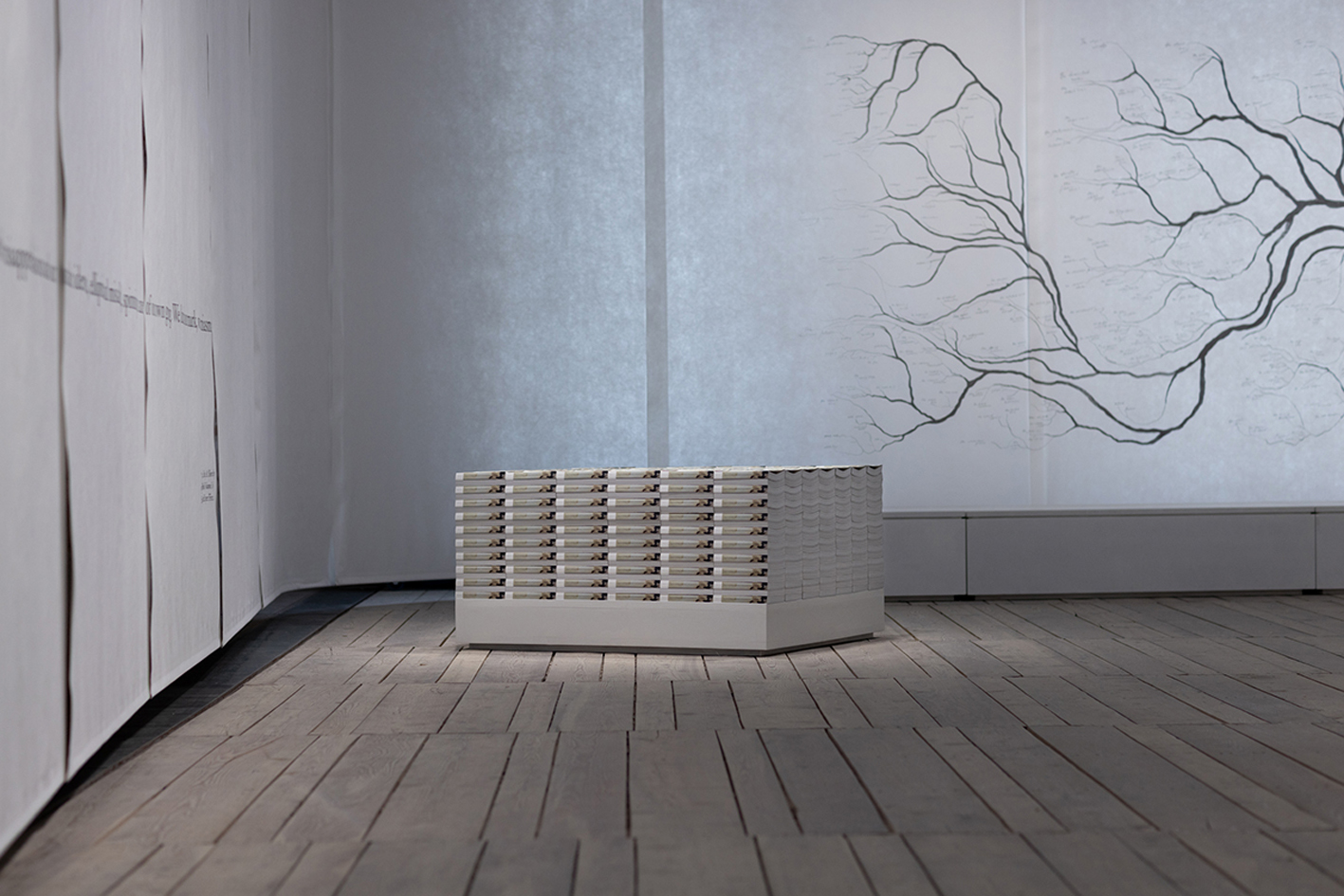Venice Biennale: Shubigi Rao's Pulp III exhibition contains multitudes
Sign up now: Get ST's newsletters delivered to your inbox

Artist Shubigi Rao's exhibition Pulp III: A Short Biography Of The Banished Book at the Singapore Pavilion of the Venice Biennale.
PHOTO: ALESSANDRO BRASILE
Follow topic:
VENICE - Amid the clamour of the Venice Biennale, the Singapore pavilion at the Arsenale complex offers space for contemplation.
Taking centre stage is artist Shubigi Rao's exhibition Pulp III: A Short Biography Of The Banished Book, which marks the mid-point of her 10-year film, book and art project on the destruction of books and the futures of knowledge.
Vistors who step within the exhibition's giant, papery folds encounter two main things - stacks of Rao's latest book titled Pulp III: An Intimate Inventory Of The Banished Book and a 90-minute film, Talking Leaves, woven from five years of footage.
While the layout is seductively billed as a "paper maze" ("meandro" is Italian for maze, as well as the act of meandering) the exhibition envelops rather than beguiles.
Rao's much-awaited Pulp III, which was published by Rock Paper Fire Singapore and printed in Venice by Grafiche Veneziane, contains reflections on libraries and books, as well as her interviews with people on topics such as disappearing languages, print in the Malay world, and archives of community, resistance and protest.
Some of them are from Venice and Singapore, two cities that are historic centres of print. Among the interviewees are the antiquarian bookseller Federico Bucci, who runs the Libreria antiquaria Segni nel Tempo in Venice, and author Stefania Bertelli, formerly of Iveser (the Venetian Institute for the History of the Resistance and Contemporary Society). In one of the chapters, Singapore writer Melissa De Silva talks about Kristang, an endangered language.
Rao, 47, is the first female artist to represent Singapore in a solo show at the art festival. She and curator Ute Meta Bauer, an art world veteran who co-curated the United States pavilion in 2015, are also the first all-women artist-curator team.
Bauer's expert curation, and the sensitive choices of the exhibition's architect Laura Miotto, have given Rao's work the space it needs to breathe. There is no spectacle, no bombast. The Singapore pavilion, in its own understated way, stays true to the bookish roots of Rao's long-running Pulp project.
This sensitivity extends to artist Zai Tang's sound design - Rao lets on that in one part of the film, what sounds like distant artillery fire comes, in fact, from the crackling of vellum manuscript pages when their leaves are turned.
Talking Leaves, when watched in its entirety, is a meditative experience that shines a light on some of the people preserving books, endangered languages and cultures from destruction.
Rao's film-making is thoughtful and nuanced. One scene shows a person handling the spines of books that had been chopped off so their pages could be scanned and digitised: preservation and destruction are hardly mutually exclusive.
Visitors to the Singapore pavilion are invited to leave their details behind in exchange for a copy of Pulp III.
While the impact of the Pulp project remains to be seen, it is an admirable attempt to push against ignorance, and to understand the violence that happens against books and cultural repositories.
Admirers of Pulp will be watching with interest as it evolves.
Go to this website. A return show will be held in Singapore in 2023.
• The writer's trip to Venice was hosted by Singapore's National Arts Council, which commissioned Pulp III: A Short Biography Of The Banished Book.

